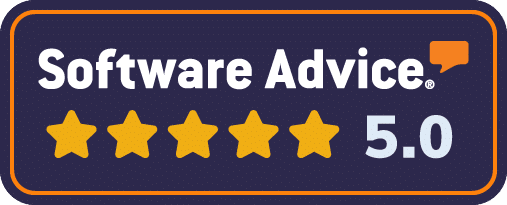When to Use a 360 Degree Review
In the realm of performance management, the 360 degree review stands out. It’s a comprehensive tool that offers a holistic view of an employee’s performance. But when is the right time to use a 360 degree review? This question often puzzles HR professionals and business leaders.
This article aims to shed light on this topic. We’ll delve into the situations where a 360 degree review can be most beneficial. We’ll also explore how to prepare your organization for this process. From crafting effective 360 degree review questions to handling feedback, we’ve got you covered.
Whether you’re a seasoned HR professional or a manager looking to improve team performance, this guide is for you. So, let’s dive in and discover when to use a 360 degree review to its full potential.
Understanding 360 Degree Reviews
A 360 degree review is a performance appraisal tool. It’s designed to provide a comprehensive view of an employee’s performance.
Unlike traditional reviews, it involves multiple perspectives. Feedback is gathered from peers, subordinates, supervisors, and even customers.
This approach offers a well-rounded understanding of an individual’s strengths and areas for improvement. It’s a powerful tool for personal and professional development.
However, to reap its benefits, it’s crucial to understand what a 360 degree review entails and how it differs from traditional reviews.
What is a 360 Degree Review?
A 360 degree review is a feedback process. It involves collecting performance assessments from various sources.
These sources include the employee’s peers, direct reports, managers, and sometimes, customers. The employee also conducts a self-assessment, adding another layer to the feedback.
How Does It Differ from Traditional Reviews?
Traditional reviews typically involve a one-on-one meeting between a manager and an employee. The manager provides feedback based on their observations and assessments.
In contrast, a 360 degree review incorporates multiple perspectives. It provides a more holistic view of an employee’s performance, making it a more comprehensive review tool.
The Right Timing for 360 Degree Reviews
Implementing a 360 degree review requires careful planning. The timing of the review is crucial for its success.
It’s best to conduct these reviews during periods of stability within the organization. This allows employees to focus on the feedback and development plans.
However, there are specific situations where a 360 degree review can be particularly beneficial. These include leadership development, succession planning, and periods of organizational change and development.
Leadership Development and Succession Planning
Leadership development is a prime time for a 360 degree review. It provides insights into a leader’s effectiveness from multiple perspectives.
Similarly, during succession planning, a 360 degree review can identify potential leaders. It can highlight strengths and areas for development, aiding in the decision-making process.
Organizational Change and Development
During periods of organizational change, a 360 degree review can be valuable. It can help identify the skills and competencies needed for the new direction.
Moreover, it can foster open communication. This can help employees feel more involved in the change process, boosting morale and engagement.
Preparing Your Organization for a 360 Review
Before launching a 360 degree review, it’s essential to prepare your organization. This involves setting clear objectives and communicating the process effectively.
The preparation phase is crucial to ensure buy-in from all participants. It also helps to alleviate any concerns or skepticism about the review process.
Setting Clear Objectives
Setting clear objectives for the 360 degree review is a critical first step. These objectives should align with the overall business goals.
They should also be communicated to all participants. This helps to ensure that everyone understands the purpose of the review and what is expected of them.
Communicating the Process
Effective communication is key to the success of a 360 degree review. This involves explaining the purpose of the review, the process, and how the feedback will be used.
It’s also important to reassure participants about the confidentiality of their responses. This can help to encourage honest and constructive feedback.
Crafting Effective 360 Degree Review Questions
The effectiveness of a 360 degree review largely depends on the quality of the questions asked. These questions should be designed to elicit comprehensive and actionable feedback.
They should cover a range of competencies and behaviors. This includes communication skills, leadership abilities, teamwork, and job performance.
Best Practices for Questionnaire Design
When designing the questionnaire, it’s important to ensure that the questions are clear and concise. They should be specific, relevant, and easy to understand.
Avoid using jargon or complex language. This can confuse participants and lead to inaccurate responses.
Ensuring Anonymity and Confidentiality
Anonymity and confidentiality are crucial in a 360 degree review. Participants should feel confident that their responses will not be disclosed without their consent.
This can be achieved by using a secure online platform for the review. It’s also important to communicate this to participants to encourage honest feedback.
Maximizing the Benefits of 360 Degree Reviews
360 degree reviews can provide a wealth of insights into an individual’s performance and potential. However, these benefits can only be realized if the feedback is used effectively.
This involves translating the feedback into actionable development plans. These plans should be tailored to the individual’s needs and aligned with the organization’s goals.
Moreover, 360 degree reviews can also contribute to a culture of continuous improvement. They encourage ongoing feedback and open communication, which are key to personal and organizational growth.
However, it’s important to remember that 360 degree reviews are not a one-time event. They should be part of an ongoing process of feedback and development.
Creating Actionable Development Plans
Once the 360 degree review is complete, the next step is to create a development plan. This plan should be based on the feedback received and should focus on areas for improvement.
The plan should be specific, measurable, achievable, relevant, and time-bound (SMART). It should also include support mechanisms, such as coaching or mentoring.
Fostering a Culture of Continuous Improvement
360 degree reviews can help foster a culture of continuous improvement. They encourage individuals to reflect on their performance and seek ways to improve.
However, this requires a supportive environment where feedback is welcomed and acted upon. It also requires ongoing commitment from both the individual and the organization.
Addressing Challenges and Common Pitfalls
While 360 degree reviews can be highly beneficial, they also come with their own set of challenges. One of the most common is dealing with negative feedback.
Another challenge is ensuring that the feedback provided is constructive and unbiased. This requires careful planning and execution of the review process.
Handling Negative Feedback Constructively
Negative feedback can be hard to accept. However, it’s an essential part of personal and professional growth.
The key is to view negative feedback as an opportunity for improvement, rather than a personal attack. This requires a shift in mindset and a supportive environment.
Ensuring Constructive and Unbiased Feedback
To ensure that feedback is constructive and unbiased, it’s important to train reviewers on how to give effective feedback. This includes focusing on behaviors rather than personal traits, and providing specific examples.
It’s also important to ensure that the review process is fair and equitable. This includes using a diverse group of reviewers and ensuring anonymity and confidentiality.
Integrating 360 Degree Reviews into Performance Management
In conclusion, 360 degree reviews can be a powerful tool for performance management when used correctly. They provide comprehensive feedback, foster a culture of continuous improvement, and contribute to leadership development. However, their success depends on careful planning, clear communication, and a commitment to addressing challenges constructively. G360 Surveys can help you every step of the way.


